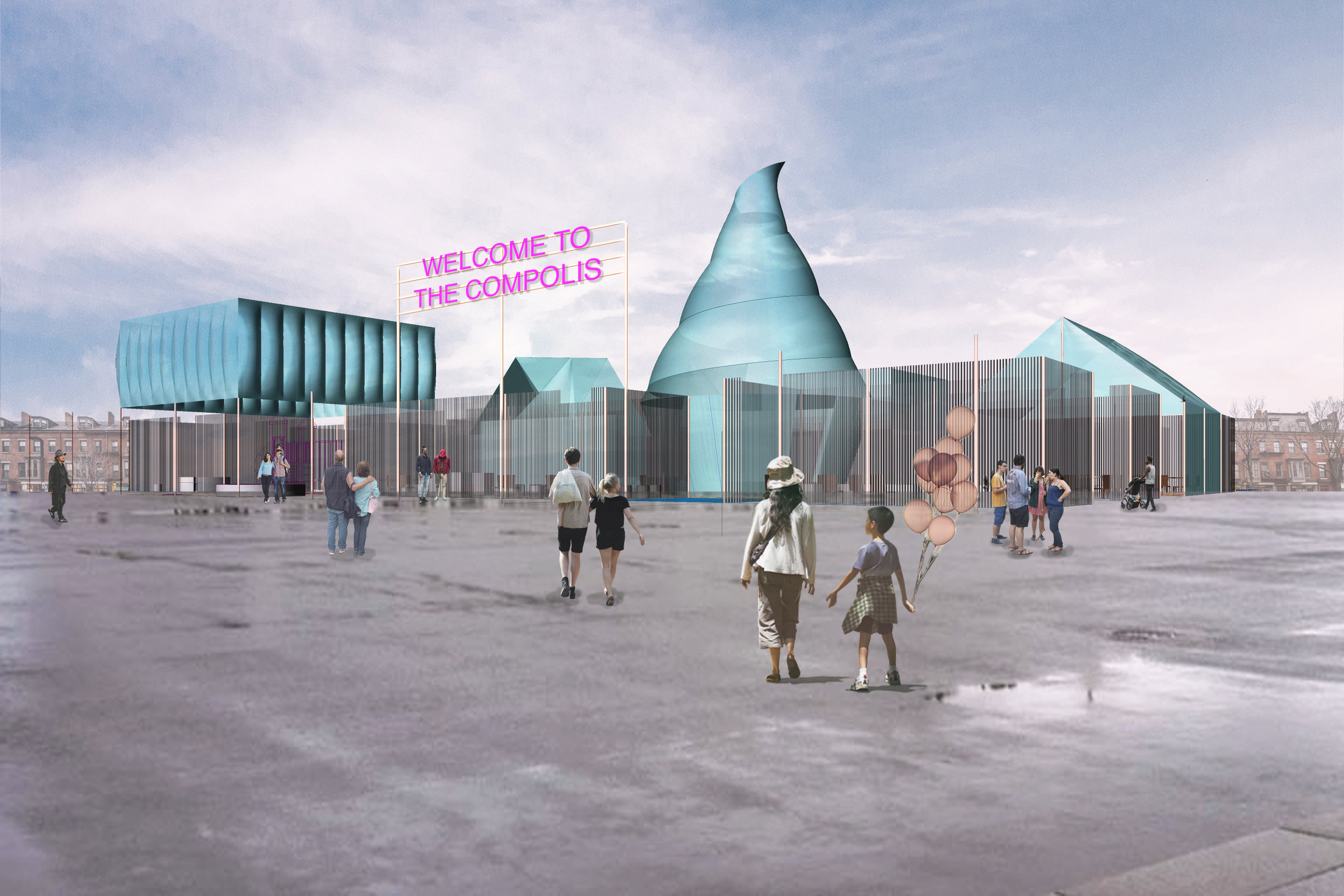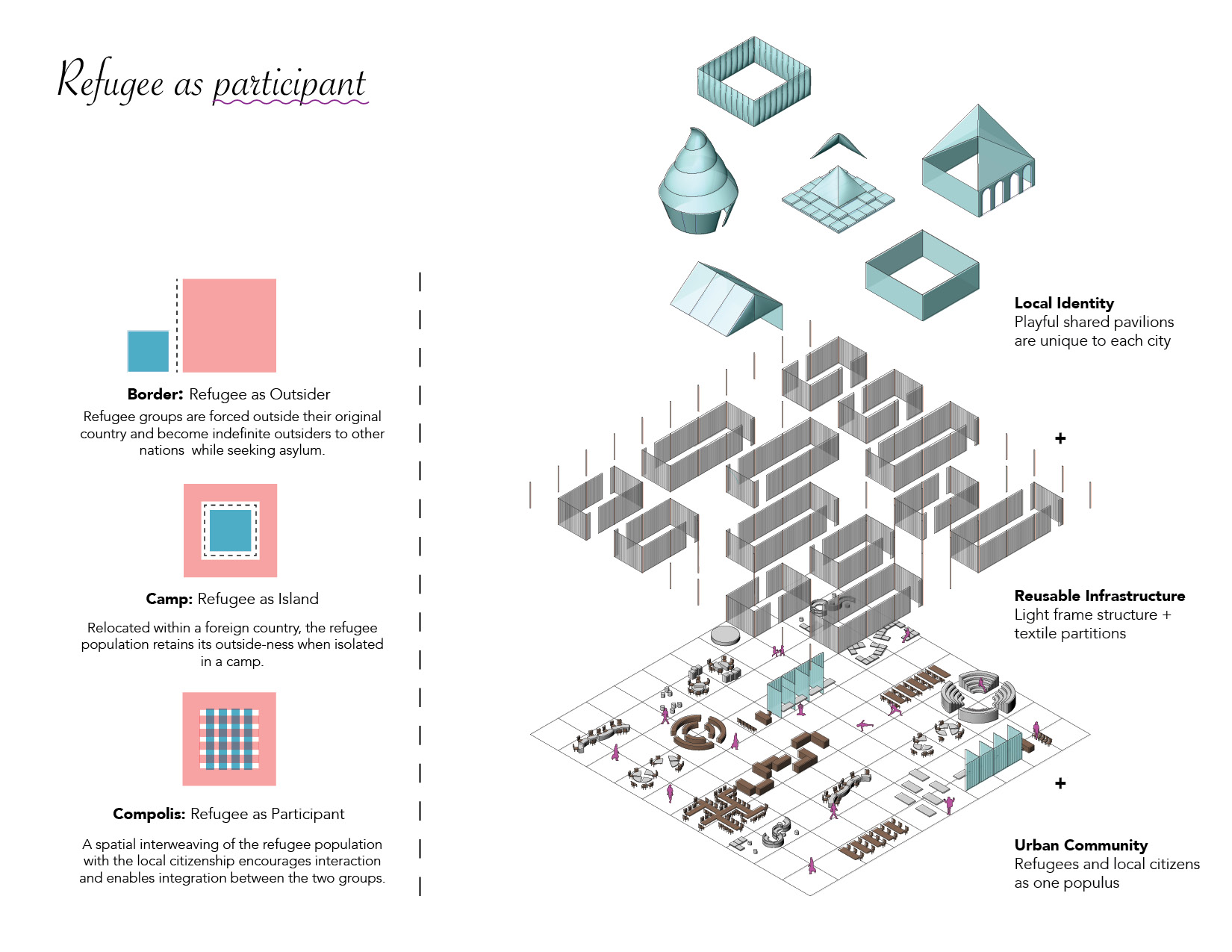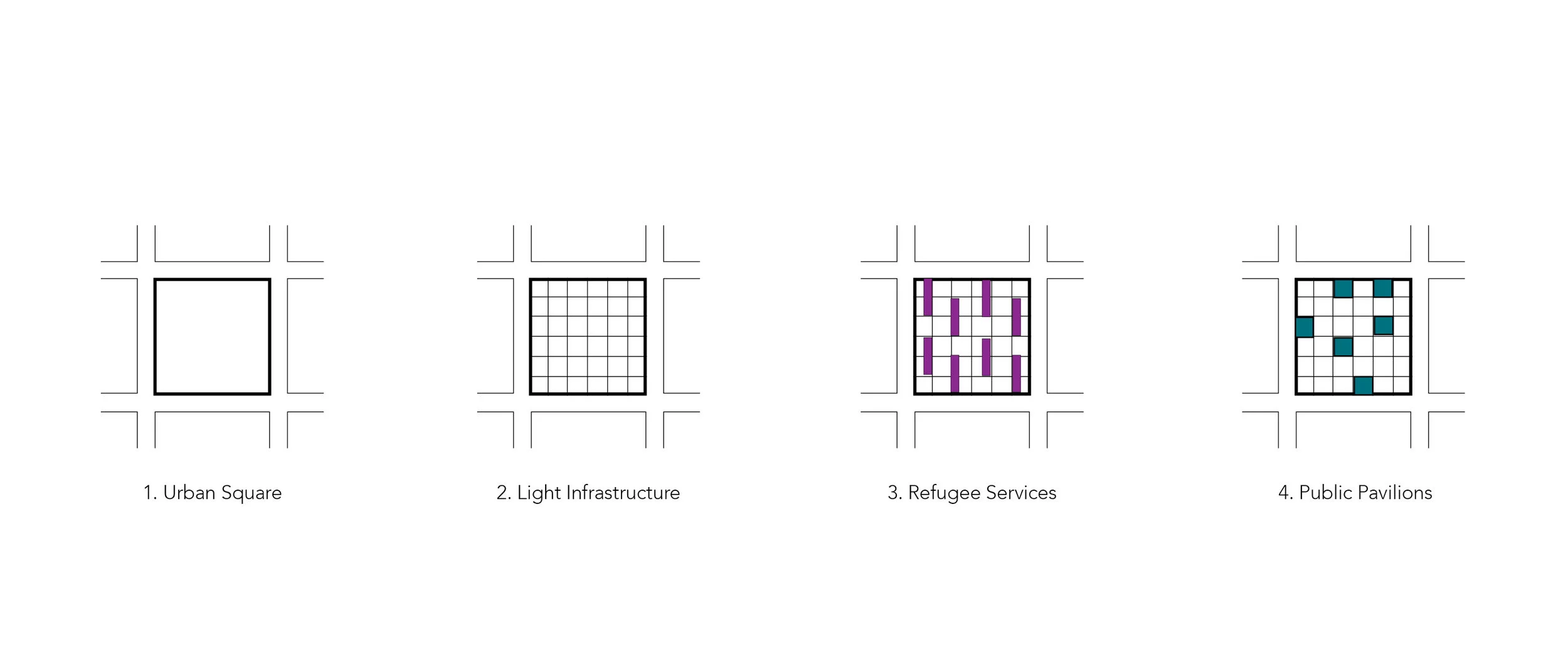






WELCOME TO THE COMPOLIS
2016
United Nations High Commissioner on Refugees (UNHCR)
'What Design Can Do' Competition
The Compolis – meaning “with” “body of citizens” – is a temporary architectural intervention that reconfigures the boundary conditions between displaced populations awaiting political determination and local citizens. Rather than isolating refugee groups within but outside of the local populus, the Compolis interweaves the two groups providing shared spaces and programs curated to provide for each.
The state of exception
Extraterritoriality, or the state of exception from local jurisdiction, is not yet formally manifest as an urban architectural problem. Bound within island typologies such as airports, embassies, and free trade zones, existing types of extraterritoriality are founded upon a disconnection from the city. New typologies of exception deployed within the city are essential to accommodate constantly changing populations.
A woven public space
Today’s refugee crisis is an urban problem, requiring cities to accommodate extraterritorial populations, socially and spatially, within their fabric. Architecture commonly fails to adapt from its convention of demarcating political boundaries with vertical walls. Alternatively, the built environment should encourage integration between disparate user groups by opening up a space of exception within the city.
Urban pavilions
The Compolis could occupy an open square or plaza of any city, ideally centrally located near transit hubs and urban activity. The site is banded in two directions, creating an infrastructural grid. The refugee service bands house dedicated programs such as language exchange, job training, cooking classes, and personal counseling. Interwoven with these services, the public bands create open passageways leading to shared urban pavilions.
Often the circumstances of a refugee group’s presence in a new place are dire...The playfulness of the shared public pavilions offer a sense of levity. The pavilions, marked by their playful, inflatable figures, offer shared social spaces with flexible uses. Open to the all, these destinations allow the refugees and local citizens to interact through shared human instincts: playing, moving, relaxing, eating, and telling.

